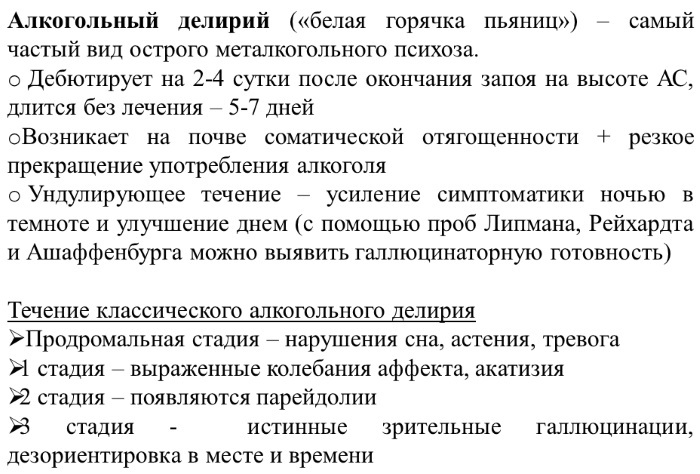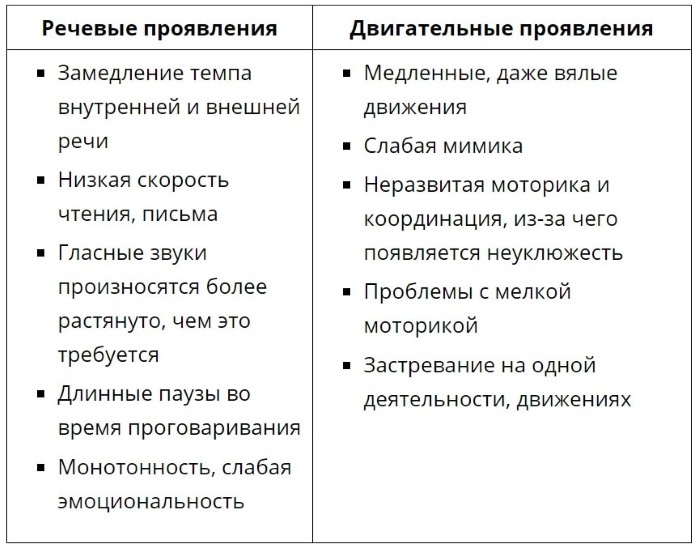Plyushkin's syndrome - a dangerous disease that negatively affects the mental state of a person. It is a type of compulsive behavior that involves collecting and storing unused things. Getting rid of hoarding is very difficult; patients are difficult to treat, therefore, it is necessary to identify the disease in the early stages in order to consult a doctor in a timely manner.
Record content:
- 1 Definition
- 2 Views
- 3 Forms of manifestations and symptoms
- 4 Reasons for the appearance
- 5 Diagnostics
-
6 Treatment methods
- 6.1 Psychotherapy
- 6.2 Drug treatment
- 6.3 Folk methods
- 7 Possible complications
- 8 Video about Plyushkin's syndrome
Definition
Plyushkin's syndrome is a disease that is so named after the character of the poem "Dead Souls" by N. IN. Gogol. His hero is a pathologically stingy landowner Plyushkin, who was described as a person with an abnormal desire to bring into the house any rubbish that, as it seemed to him, could be useful in everyday life.
Even any hint of the need to throw out the precious rubbish caused the strongest mental anguish in Plyushkin.
In the United States and several other Western countries, the disease is called syllogomania. The disease is associated with senile insanity, but sometimes psychopathology can be observed in relatively young people.
Mental disorder, depending on the cultural environment and country, can be called differently:
- hoarding;
- dysposophobia;
- Messi syndrome.
Even among believers, there is a phenomenon of misleading - a passion for collecting things, which, according to Orthodox traditions, is considered a sin. In addition to many names, the disease also has an official name, which reveals the essence of the disease - the syndrome of pathological hoarding.
It is extremely important for a person with this mental disorder to bring into the house everything that in one way or another may be of some value to him. Most often, we are talking about household rubbish, including broken and faulty things.
The patient can bring them even from landfills. He can specifically ask friends to give him unnecessary things, as well as purchase piles of rubbish at flea markets, as a rule, at a significant discount.
The syndrome of pathological hoarding causes significant inconvenience to both the patient himself and his family and friends, therefore, this disease must be fought. In addition, insanity can pose a public danger.
In severe cases, the patient begins to accumulate food waste (stubs, peels), which can pose an epidemiological hazard; Rotting garbage in a residential building is an excellent environment for all kinds of pests - from fleas and bedbugs, to mice and rats that can carry dangerous diseases, up to bubonic plague and cholera.
Views
Plyushkin's syndrome is a mental illness that develops according to the same pathological hoarding scheme.
Despite this, experts distinguish several types of manifestations of the disease:
- "collecting". Real collecting means the systematic collection and study of any objects that are homogeneous in content or have a common theme. Patients with Plyushkin's syndrome most often acquire or collect various little things that are not related to each other;
- vintageism. Vintageism should also be distinguished from collecting antiques; the collector does not consider the items of his collection as household appliances or articles of clothing. Patients with Plyushkin's syndrome turn their home into a museum and actively use the collected antiques;
-
purchase of pets. A common manifestation of Plyushkin's syndrome is associated with "collecting" animals, especially cats or dogs. Patients often have them in very large numbers, which leads to unsanitary conditions in the house, lack of free space and unpleasant odors;
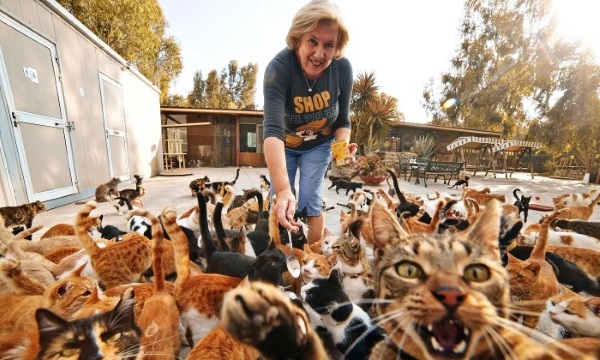
- collecting things that may be "useful" in the future. The most famous type of gathering initially appears in a mild form: a person instead of to throw away an unnecessary thing, puts it aside, explaining this by concern for the future, when it can bring benefit. Following this logic, the patient collects a huge amount of rubbish, which takes up a lot of space in the house, not leaving it for ordinary household items. At the same time, the possibility of getting rid of any things causes uncontrollable fear in the patient with the syndrome, therefore it is very difficult for him to get rid of the obsessive state on his own;
- conservatism. The so-called type of gathering is associated with the blockage of fruits, berries and vegetables. The patient can be so carried away by his occupation that cans of food can occupy entire pantries and part of the rooms;
- memory about loved ones. This type of hoarding is associated with the desire to preserve everything that is left of a loved one who died in the past or left the patient.
Also, hoarding develops in certain stages:
| Stage name | Description |
| Initial | At the initial stage, a person feels a slight anxiety when the need arises to throw out any things; the patient begins to collect various items, store them carefully and constantly replenish the collected. |
| Average | At the second stage, the patient begins to fill the living quarters with rubbish, leaving no room for really important things. He ceases to care about his hygiene and his appearance, is constantly nervous and looks very anxious most of the time. In the family, conflicts begin over a large number of things. |
| Late | A person's house begins to resemble a garbage dump with unsanitary conditions. It is almost impossible to communicate with the patient; such patients are difficult to treat. |
Forms of manifestations and symptoms
Plyushkin's syndrome is manifested by the inability to part with things, regardless of their cost, desire save money and get further benefits, which in reality leads exclusively to littering housing.
The constant collection of unnecessary items and the fear of losing them leads to frequent stress and nervousness of the patient, which can affect relationships with loved ones and the mental state of the person.
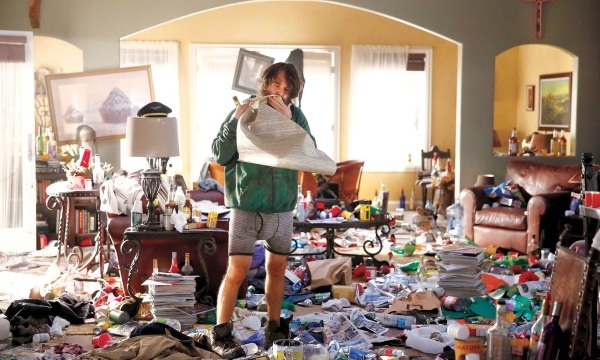
Distinctive symptoms of Plyushkin syndrome include:
- Refusal to throw away unnecessary things (bags, bottles, old appliances, damaged sets and other items unusable).
- Aggressive reaction towards those who decide to dispose of the patient's "collection"; when trying to get rid of any things, a person can throw a tantrum and become seriously angry at those who want to touch his trash.
- The patient stops caring for his appearance, stops taking a bath, looks untidy and does not dress well.
- The patient is constantly shifting his things in search of finding a suitable place for them. But due to the fact that his "collection" is constantly replenished, the patient with Plyushkin's syndrome has to litter outside premises (sheds, garages) and occupy living quarters; the option to throw away at least some of the garbage is not considered.
- In the later stages, it becomes almost impossible to communicate with a person with Plyushkin's syndrome, as he begins to close himself off from society and avoid other people.
- The home in which the patient lives becomes dirty and littered with various things. Clutter often leads to unsanitary conditions and the rapid accumulation of debris, which begins to decompose and spread an unpleasant odor. In this case, a person may not pay attention to obvious pollution; it is not a good reason to get rid of things.
- It becomes difficult for a person to make out all the purchased items and remember where the thing he needs is located.
- In the process of the development of the disease, one can see significant personal changes in a person - he becomes aggressive and quick-tempered.
Patients with Plyushkin syndrome sincerely believe that the things they collect can be beneficial in the future.; many items are emotionally important to them. Some patients feel comfortable in a cluttered environment, many note the sense of security that the atmosphere of a multitude of objects gives them.
Reasons for the appearance
Plyushkin's syndrome is a mental illness that can occur as a result of the following reasons:
-
strong shock. The syndrome often occurs after the loss of a loved one, when the patient tries to preserve all objects that remind of the past;

- poverty in the family. A child who in childhood lived in unfavorable conditions of constant economy and poverty can continue to maintain the habit of saving things in case of hunger or a difficult period;
- inability to adapt to social conditions. It often happens that due to mental abnormalities and traumatic situations, a person stops contacting people; he begins to build garbage structures that shield him from the outside world. Thus, the patient tries to hide from society and isolate himself from external influences;
- heredity. The transfer of the propensity to hoarding occurs not at the level of genetics, but as a result of the upbringing and observation of the child's behavior of the parents;
- lack of attention in childhood. If in childhood the child suffered from a lack of parental attention, did not receive gifts and toys - in a more conscious at age, he can begin to replenish what he lacked at an early age, which can be expressed in Plyushkin's syndrome;
- feeling of loneliness. The absence of loved ones and the fear of finding friends or a loved one leads to the fact that the patient begins collect things, buy new items and constantly "collect" something in an attempt to drown out the lonely condition;
- mental disorders. Most often, Plyushkin's syndrome is a concomitant symptom of a mental illness. For example, in schizophrenia, a person may suffer from hoarding;
- bad habits. People with alcoholism may develop a tendency towards pathological hoarding over time;
- senile dementia. Against the background of dementia, abnormal inclinations are often manifested, while pathological hoarding is one of the most common deviations in old age;
- person's character. A penchant for economy, greed and excessive prudence often leads to the inability to deny oneself a "bargain purchase" or acceptance of any things. This can lead to the development of hoarding.
Diagnostics
Plyushkin's syndrome is diagnosed by a specialist in the field of mental illness - this can be either a psychotherapist or a psychiatrist in cases of an advanced stage of deviation.
When referring to a specialist, the patient's desire to identify the reason for his behavior is important, for which it is necessary critical thinking and the ability to question your beliefs about hoarding, which happens very much seldom.
If the patient agreed to visit a doctor, a close person should be present with him, who will be able to more objectively describe the patient's symptoms, which is necessary for the formation of effective treatment.
As a result of the consultation, the doctor most often prescribes a course of psychotherapy and possible medications; the effectiveness of therapy largely depends on the patient's desire to get rid of the syndrome.
Before you go to a doctor, it is worth remembering that this disease, due to the patient's conviction in the adequacy of his actions, is very difficult to treat, therefore, not always specialists, even with the help of all possible efforts, are able to help a patient with the syndrome Plyushkin.
Treatment methods
Plyushkin's syndrome is a mental illness that can only be treated with the help of psychotherapy, if the source of the deviation cannot be physiological. There are concomitant therapies that can alleviate the patient's condition by drowning out attacks of aggression and nervous breakdowns. These include drug therapy and folk remedies.
Psychotherapy
Cognitive behavioral therapy (CBT) is the most effective treatment for Plyushkin syndrome.
CBT is effective on its own or in combination with other treatments for:
- anxiety;
- depressive symptoms;
- insomnia;
- bad habits;
- obsessive thoughts.
The mechanism of therapy is to seek out and become aware of automatic thoughts that lead to negative reactions. During the sessions, the doctor tries to explain to the patient his incorrect perception of the world around him, due to which there is a feeling of fear of losing or throwing away accumulated things, aggression towards loved ones and a feeling of strong anxiety.
As a result of therapy, the patient studies the mechanisms of his feelings and learns to control them, analyzes the fear that arises when trying to get rid of hoarding in order to understand its true reason.
In the early stages of the disease, there is a chance that the patient will really understand the irrationality of his behavior, but at the last stage it is almost impossible to completely get rid of Plyushkin's syndrome.
There is also a psychodynamic therapy method. It is necessary to raise the patient's awareness of his unconscious thoughts and motives of behavior, develop a new understanding of his motivation and resolve conflicts.
It has been proven that short-term psychodynamic therapy using psychotherapeutic therapy is an effective treatment for depressive symptoms that can develop in conjunction with the syndrome Plyushkin.
Also, therapy allows you to work through trauma and parent-child relationships. To recognize the patient's internal conflict, the doctor uses the technique of projections and transference, and after identifying the necessary elements of subconscious contradictions, he tries to show them to the patient.
As a result of therapy, the patient develops self-awareness, understanding and the ability to analyze the motives of his actions. Thus, he learns to control his emotions and know the source of their origin.
An additional element in the main course of treatment is body-oriented therapy, family and art therapy. Body-oriented treatment includes methods of treatment and diagnosis, which are the effects of the therapist's hands on the patient's body. As a result of treatment, the patient learns to feel his body and listen to its reactions to various influences.
The patient frees himself from muscle clamps, begins to control his body, which helps him in the future to prevent the symptoms of panic attacks. Family and art therapy are complementary but rewarding ways to work through your emotions and relationships with people.
Plyushkin's syndrome is a difficult disease for the patient's relatives to accept, so family therapy will help to establish contact between the patient and his family. Art therapy is the patient's way of expressing their emotions through creativity, which is an important complementary part of mainstream psychotherapy.
Drug treatment
Medicines in the process of treating Plyushkin's syndrome are prescribed exclusively by a specialist, depending on the individual characteristics of the patient and his possible concomitant diseases. Drugs during therapy eliminate the symptoms or treat the underlying disease, as a result of which Plyushkin's syndrome arose.
Essential medicines prescribed by your doctor:
-
Phenazepam. It helps relieve symptoms such as anxiety, tension and depression.

Phenazepam is a sedative pill for stress, anxiety, a group of tranquilizers - Alimemazine, thioridazine, quetiapine. These antipsychotics should be used only during acute attacks of panic attacks, anxiety. They function only to suppress anxiety, without relieving other symptoms.
- Fluoxetine, Zoloft, Prozac. The drugs are antidepressants and are most often prescribed in the periods between exacerbations of the disease. Medication is needed to improve mood, correct sleep problems, and generally improve the patient's psychological well-being.
- Noopept. The drug belongs to nootropic substances and is taken to improve the metabolic processes of the brain.
- Lithium preparations. Their action is aimed at reducing impulsivity and aggression, but the effect begins to manifest itself only on the 5th day of admission, so the drug is used as an additional tool in the course with others medicines.
- Fluoxetine, Zoloft, Prozac. Medications are antidepressants and are needed to improve mood, eliminate sleep problems and generally improve the patient's psychological state.
Folk methods
Alternative methods are an additional way to treat the negative symptoms of Plyushkin's syndrome:
- anxiety;
- aggression;
- uncontrollable fear;
- depression;
- mania.
- Tea to reduce anxiety. The tea recipe helps relieve stress, headaches and improve digestion. To prepare a drink, you must mix the following ingredients in the following proportions:
- 0.25 lemon balm;
- 0.5 parts mint;
- 4 pinches of lemon zest;
- 0.25 parts aniseed hyssop;
- 1 stem of lemongrass;
1 tbsp the resulting mixture must be poured into 1 liter of boiling water, let the tea brew for no more than 10 minutes. The resulting tea can be drunk throughout the day.
- Soothing tea. For cooking, you need 13 g of St. John's wort, 16 g of motherwort, 3 g of hawthorn, 10 g of valerian roots, 10 g of lemon balm. The mixture must be poured with 1 glass of boiling water, let it brew for no more than 10 minutes. The resulting tea must be filtered and drunk at night.
- Tincture for irritability. For cooking, you need to mix the zest of 1 lemon, 1 tbsp. l. motherwort herbs and 200 ml of water. Pour boiling water over the mixture, leave for 3 hours in a sealed enamel bowl and then strain. Take 1/2 tbsp. l. 4 times a day after meals.
-
Soothing oil. The tool will help reduce irritability and increased excitability. To use, you need to mix 200 g of flowering mignonette and 0.5 liters of sunflower oil. Insist the resulting liquid for about 2 weeks in a cool room, shake it periodically. After the time has elapsed, use the solution, rubbing a small amount of it into the whiskey no more than 2 times a day.
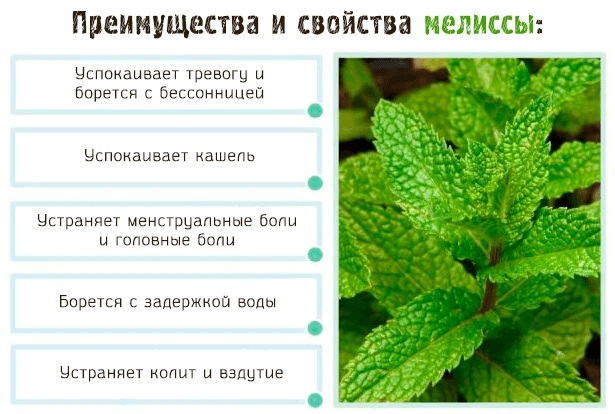
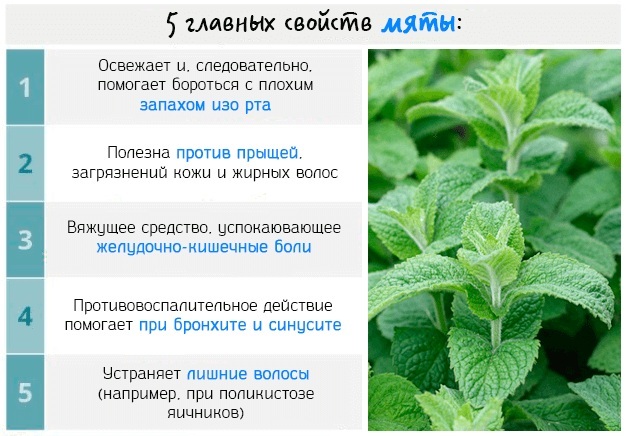
- A decoction of mint and lemon balm. Mint and lemon balm relieve stress and promote good sleep. 1 tbsp. l. a mixture of these two herbs must be poured with 200 ml of boiling water, allowed to cool and drink throughout the day in equal portions. The broth helps to calm down and normalize sleep.
Possible complications
Plyushkin's syndrome is a mental illness that has extremely serious consequences. Pathological hoarding carries a great danger, first of all, for the patient himself, who can significantly undermine his own health and pose a danger to society.
In addition, the disease is characterized by rapid progression, leading to the destruction of the personality. Treatment will help get rid of the syndrome only in its early stages of development, but therapy, even in this case, cannot be guaranteed to be successful. Regular psychotherapy along with medication can relieve symptoms and avoid the extreme stages of hoarding.
Lack of treatment can lead to:
- fires, because the clutter of the premises contradicts fire safety standards;
- getting injured, which is associated with a large number of objects that interfere with normal movement around the house;
- diseases that result from unsanitary conditions;
- the appearance of insects and fungi that develop in unhygienic home conditions;
- diseases due to non-compliance with personal hygiene;
- the development of other mental illnesses;
- complete personal isolation due to conflicts with loved ones and others.
Plyushkin's syndrome is characterized by a pathological passion for the accumulation of unnecessary items and things. The disease is difficult to treat in the later stages of development, therefore, notice the symptoms of a mentally dangerous the syndrome is desirable at an early stage of its development in order to consult a doctor in a timely manner and start taking a course treatment.
Video about Plyushkin's syndrome
Doctor about Plyushkin's syndrome:

